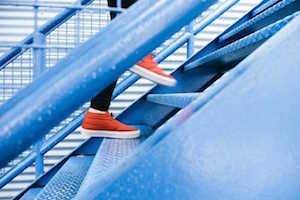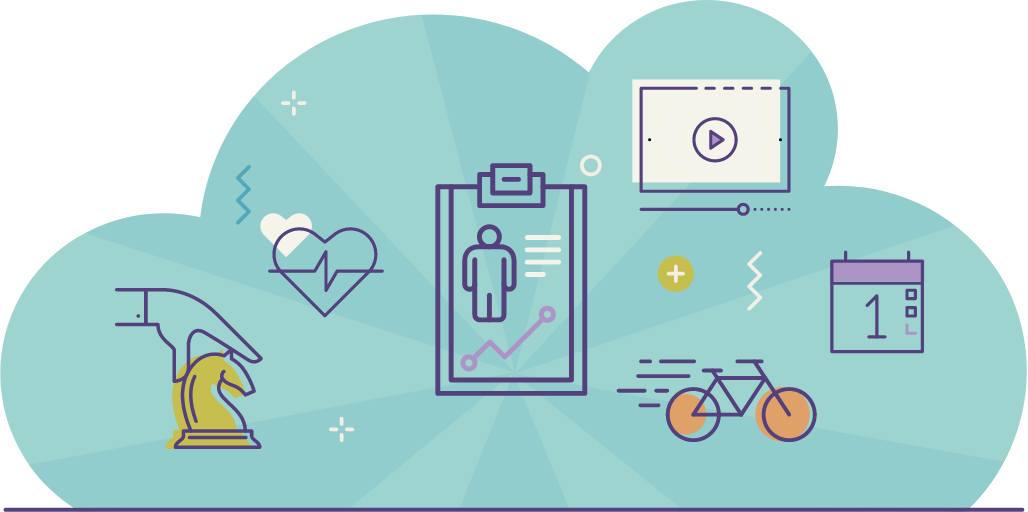By Edwina Green, Corporate Nutritionist
Hippocrates is reputed to have said walking is the best medicine, I am inclined to agree. But how can a Greek physician who was born in 460 BC have any idea what the best medicine is in our modern world?
There is no doubt that we were designed to walk and biomechanically, sitting is not good for us as a species. A recent meta-analysis associated prolonged sitting (more than four hours per day), independent of physical activity, with increased mortality from heart disease, diabetes and cancer [1]. If, like many of us, you spend the majority of your working day at a desk or behind a steering wheel, then you fall into the category of prolonged sitters. Regardless of whether or not you also spend an hour at the gym three times a week.
The benefits of walking
The benefits of walking are not only linked to disease prevention but with improved outcomes for those who are experiencing poor health. This infographic from Everybody Walk details some of the physical benefits of walking:
Because of these many benefits, walking should be encouraged as part of any well-rounded workplace wellness programme.
Build walking into your day

The beauty of walking is that it can be integrated into your life as a specific activity; a lunchtime walk around the block or a weekend excursion along a country trail. Or walking can be distributed throughout your day without too much conscious effort. I remember a former colleague who was wearing a pedometer as a part of his diabetes management. He moved to a new office with centralised printing. This meant he had to get up from his desk and walk the length of the office floor to collect his printing. He found his steps increased significantly just with that one change in office layout.
rather a lot of coffee. We were talking about reducing his intake; he looked dismayed not because he would miss the coffee per se, but he made a conscious effort each morning and afternoon to get up and walk away from his desk to make a coffee for himself and his colleagues. In both these cases, the individuals are breaking up seated periods with an activity which included walking away from their desk.
A convenient ‘magic pill’
A recent study using data from the annual Health Survey for England compared how different types of physical activity predicted a person’s weight. They found that individuals who walk at a brisk or fast pace are more likely to have a lower weight when compared to individuals undertaking other activities [2]. Grace Lordan, doctor of health economics at the London School of Economics, who undertook the study, concluded that “walking is more convenient than the gym and is easier for people to maintain”. These views are shared by Dr James Brown from the School of Life and Health Science at Aston University. In his 2014 presentation to the British Science Festival he described walking for half an hour a day is equivalent to taking a ‘magic pill’ that combats ageing and prevents premature death.
Walking helps you work smarter
Unshackling yourself from your desk or steering wheel for a 30 minute walk could also help you work smarter. Steve Job often used the streets of Palo Alto as his office and author Henry David Thoreau wrote in his journal; “Methinks that the moment my legs begin to move, my thoughts begin to flow”. This idea was tested by a study in 2014 which devised four experiments to see if walking boosted creativity. Participants undertook a series of creative tests, but before each test they either sat inside, walked on a treadmill inside, walked outside, or were rolled outside in a wheelchair. The study concluded walking outside opened up the free flow of ideas [3].
National Walking Month – what will you do?
May is designated as National Walking Month and so it may be time to actively consider ways of integrating 30 minutes of walking into your working day? Some ideas include:
Use your commute:
- Get off the bus / tube a few stops earlier
- Walk from your mainline train station to the office
- Walk to /from your home to the train station/tube/bus stop
- Find a car park further from the office
Use your lunch hour:
- Walk around the block & explore the streets, find places you didn’t know existed
- Find a walking buddy
Use the office:
- Take the stairs instead of the lift
- Use a printer, kitchen or meeting room a little further away from your desk
- For 1-2-1 meetings, don’t book a meeting room, go outside and have a walking meeting. This is common among tech leaders from Jack Dorsey (Twitter) and Steve Jobs (Apple) to Mark Zuckerberg (Facebook).

At Superwellness, our seminars and programmes provide employers and employees with inspiring yet practical nutrition and lifestyle advice. We can help you plan your employee wellbeing programme and tailor make plans to suit you and your company’s needs, including manageable ways of building exercise into the workplace. Please contact us for further information about our nutrition seminars and workplace wellbeing programmes.
Edwina Green, Associate and Registered Nutritional Therapist

Edwina is a firm believer in natural health and the transformative benefits that good nutrition can bring. Before making the career move to naturopathic nutrition, she ran her own company working in the City of London. She is fully aware of the challenges of trying to follow a healthy diet and lifestyle, while juggling full time work and ensuring quality time with family and friends. She is passionate about helping people take practical steps to manage their own health and teaching them to dissect the varied and often conflicting information that we receive via the media.
Edwina is currently studying for an MSc in Personal Nutrition and is specifically interested in the connection between our genes and our health. In particular, the field of nutrigenomics where the food we eat can positively influence our genes, reducing the risk of disease.





















